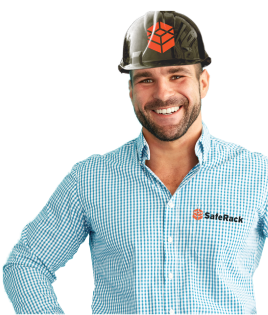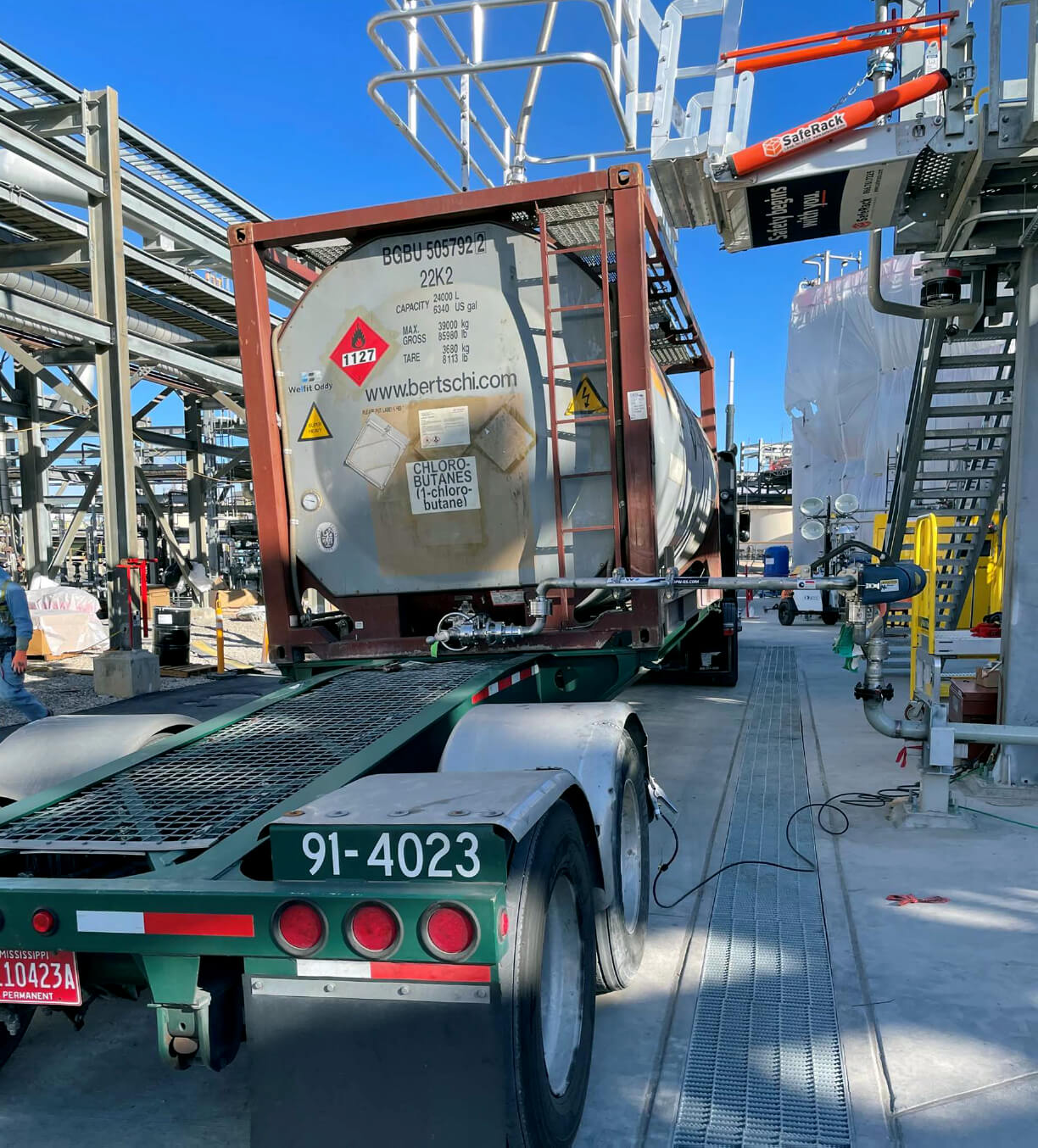ISO Container with Bottom Loading Arm and SafeRack Gangway
Categories: Grounding & Monitoring Loading Platforms/Racks Top Loading Arms Bulk Chemical Energy – Petroleum, LPG, Solar Transportation & Logistics G4/GX Gangway SafeRack Truck

Product Categories
services
solutions for
OUR EXPERTS
Simplify the Complex
The Leaders in
Truck
Railcar
Marine
Fall
Prevention
Access Safety
and Bulk Loading


OUR EXPERTS
Simplify the Complex
The Leaders in
Truck
Railcar
Marine
Fall
Prevention
Access Safety
and Bulk Loading


Categories: Grounding & Monitoring Loading Platforms/Racks Top Loading Arms Bulk Chemical Energy – Petroleum, LPG, Solar Transportation & Logistics G4/GX Gangway SafeRack Truck

ISO Container with bottom loading arm, vehicle grounding, and SafeRack gangway with a safety cage for top access or venting – Chevron
ISO tank containers are designed to meet the stringent specifications established by the International Organization for Standardization (ISO). These containers are engineered for the safe transportation of both toxic and food-grade liquids, ensuring secure and efficient handling.
ISO tanks help reduce shipping and handling costs by facilitating the seamless transfer of smaller liquid cargoes across multiple transport methods—whether by truck, rail, ship, or even air. Their uniform size, sturdy frames, and standardized locking mechanisms ensure quick and safe transfers. Cranes and other handling equipment can easily secure and move these tanks, ensuring efficient transportation from one vehicle to another.
The ISO tank featured above is used to transport 1-chlorobutane, a colorless and highly flammable liquid commonly used in the production of plastics, rubber, and pesticides. The tank is constructed from stainless steel to withstand high pressures and temperatures. To enhance safety, it is equipped with pressure relief valves that prevent dangerous pressure build-up and baffles to minimize liquid sloshing during transport. Proper labeling and certified drivers are essential for the safe handling of such hazardous materials.
There are two primary methods for loading fluids into tanker trucks: bottom loading and top loading.
The bottom loading method is preferred when transferring flammable liquids. This process minimizes fluid splashing, which can generate static electricity and lead to dangerous sparks or explosions. Bottom loading is not only safer but also more efficient, allowing for gravity-fed filling and faster operations. Additionally, it supports a higher vapor recovery rate—up to 99%—thus reducing air pollution during petroleum transfers.
Bottom loading offers another critical safety benefit: operators remain on the ground throughout the process, enabling a quicker response in case of emergencies. This method also ensures that vapors are safely contained and managed, contributing to environmental safety.
Although bottom loading is safer for flammable liquids, top loading can be used for non-flammable materials. When using the top loading method, ensuring worker safety is crucial. A self-adjusting gangway combined with a safety cage provides secure access to the tanker’s top hatch, reducing fall risks during hose attachment.
Loading platforms play a vital role in industrial operations, facilitating the safe loading and unloading of materials. However, they also present potential fall hazards. This is why safety cages are essential. These cages act as barriers, preventing workers from falling and cushioning any accidental slips, significantly reducing the risk of serious injuries.
By combining the right loading method with the proper safety equipment—like gangways, safety cages, and vapor recovery systems—facilities can ensure safer, more efficient liquid transfer operations while maintaining compliance with industry safety standards.